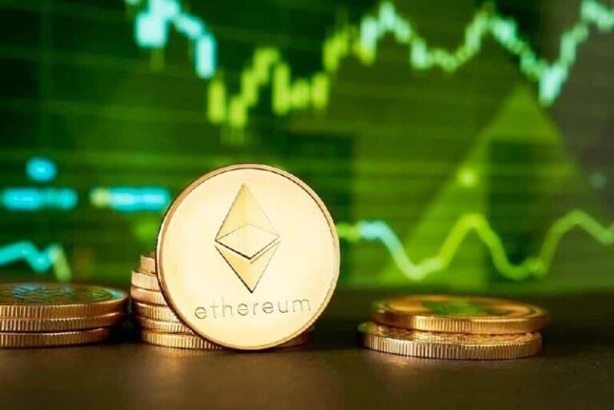The Philippines has always been a country that pays attention to exchange rates. For decades, it was the peso to dollar that defined so many financial decisions, from OFW remittances to business contracts. But in 2025, a new number is quietly stealing the spotlight: eth to php. Ethereum, once seen as a niche digital coin for tech geeks, is now so ingrained in finance, gaming, and online work that its peso value matters almost as much as the dollar rate. For many Filipinos, checking eth to php has become part of their daily financial routine.
At first glance, eth to php is simple it shows how much one Ethereum is worth in Philippine pesos. But what makes it fascinating is the way it moves. It’s not just tied to Ethereum’s price in dollars; it also reflects the peso’s own strength against the greenback. Imagine Ethereum trading at $3,500 globally. If the peso-dollar exchange sits at ₱56, then one ETH equals ₱196,000. But if the peso weakens, that number climbs even higher, even if Ethereum itself hasn’t moved at all. For Filipinos, that means eth to php feels more alive and unpredictable than a regular exchange rate.
This unpredictability is exactly why so many people are watching it closely. For freelancers and remote workers who get paid in Ethereum, eth to php decides how much ends up in their bank accounts. A jump in ETH could mean an instant pay raise without doing extra work. For OFWs experimenting with Ethereum as a way to send remittances, a favorable eth to php conversion means families back home receive more pesos. And for gamers, NFT creators, and Web3 entrepreneurs, the peso value of Ethereum directly impacts how much their digital rewards and investments are really worth in the real world.
The story of eth to php in 2025 is more than just numbers—it’s about how global crypto trends collide with local realities. On the global side, Ethereum’s price is influenced by big upgrades to the blockchain, institutional adoption, and the ever-changing tides of investor sentiment. On the local side, the peso’s movement against the dollar adds another twist. Even if Ethereum’s global value is steady, a shift in peso strength can make eth to php rise or fall dramatically. This dual factor makes tracking the rate both exciting and nerve-wracking for Filipinos who rely on it.
To put it in perspective, let’s say Ethereum sits at ₱180,000 today. Someone holding just 0.05 ETH would have around ₱9,000. If the price climbs and eth to php jumps to ₱220,000, that same 0.05 ETH is suddenly worth ₱11,000. In practical terms, that’s enough to cover bills, groceries, or maybe even a new gadget. The conversion makes Ethereum feel less like an abstract crypto token and more like a direct part of daily life in the Philippines.
What’s also changing is how Ethereum is being used in the country. Back when crypto adoption first spiked, it was mostly because of play-to-earn gaming. Now in 2025, it’s much bigger. Decentralized finance apps are helping Filipinos save, borrow, and earn without traditional banks. Businesses are exploring Ethereum-based payments. Even students are learning about ETH as part of finance and technology courses. All of this makes eth to php more relevant, because it’s not just a rate for traders—it’s a rate that touches regular people’s lives.
Looking at where eth to php might go, the possibilities are wide. If Ethereum’s global price pushes toward $5,000, Filipinos could be looking at values above ₱280,000 per ETH. Even in a mid-range scenario of $3,000–$4,000, the conversion sits comfortably between ₱168,000 and ₱224,000. Of course, volatility works both ways, and dips are always possible. But whether bullish or bearish, the peso equivalent of Ethereum will remain significant, especially compared to traditional investments.
For holders of Ethereum in the Philippines, the real question is strategy. Long-term investors may see eth to php as just one chapter in a bigger story, holding on to their ETH for future gains. Short-term traders, on the other hand, will likely play the swings, converting at peaks to maximize their peso value. Then there are the everyday users—freelancers, gamers, OFWs—who simply want to get the best possible conversion when it’s time to cash out. For each of them, eth to php isn’t just a financial figure, it’s a decision point that impacts real-world outcomes.
What makes the conversation around eth to php so fresh in 2025 is how normal it has become. Just a few years ago, it was seen as something only crypto enthusiasts cared about. Now, it’s a mainstream number that shows up in conversations about salaries, remittances, savings, and even shopping. It bridges the gap between the digital economy and the everyday peso economy, giving Ethereum a place in the daily financial mindset of Filipinos.
In the end, the rise of eth to php in the Philippines tells a bigger story. It’s about how technology reshapes money, how global trends meet local realities, and how a digital coin can become as familiar as a currency you use every day. Ethereum may have started as an experiment, but in 2025 its peso value is something families, workers, and entrepreneurs are tracking with real intent. For Filipinos, eth to php is no longer just a conversion—it’s proof that crypto has become part of everyday life.






